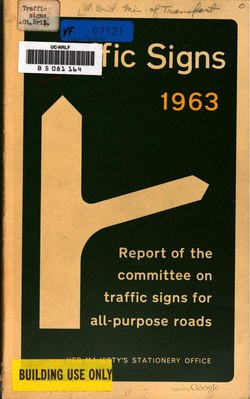Index:Report of the Traffic Signs Committee (1963).pdf
Jump to navigation
Jump to search
| Formatting guidelines specific to this work may have already been established. Please check this Index's discussion page and follow any such conventions. |
| Contents
|
